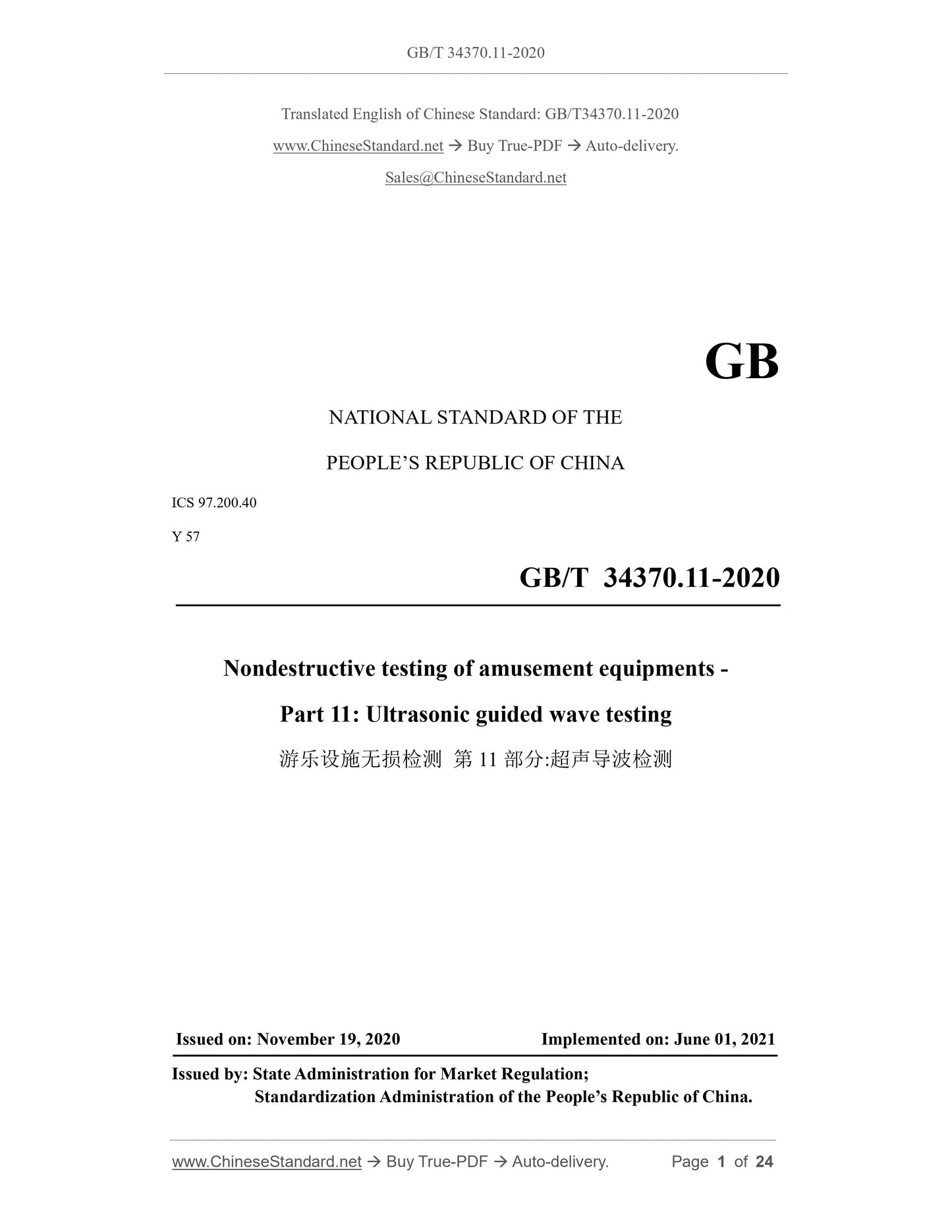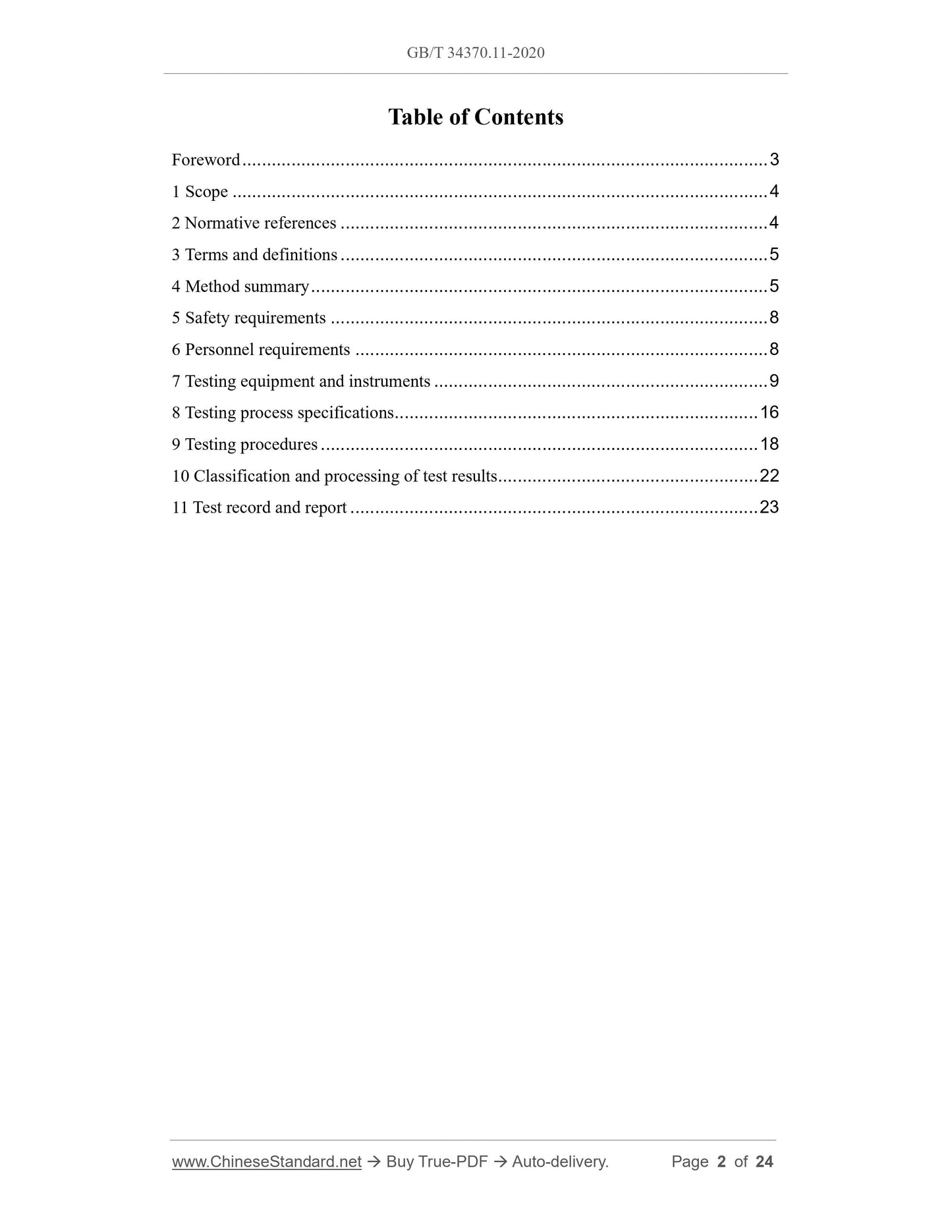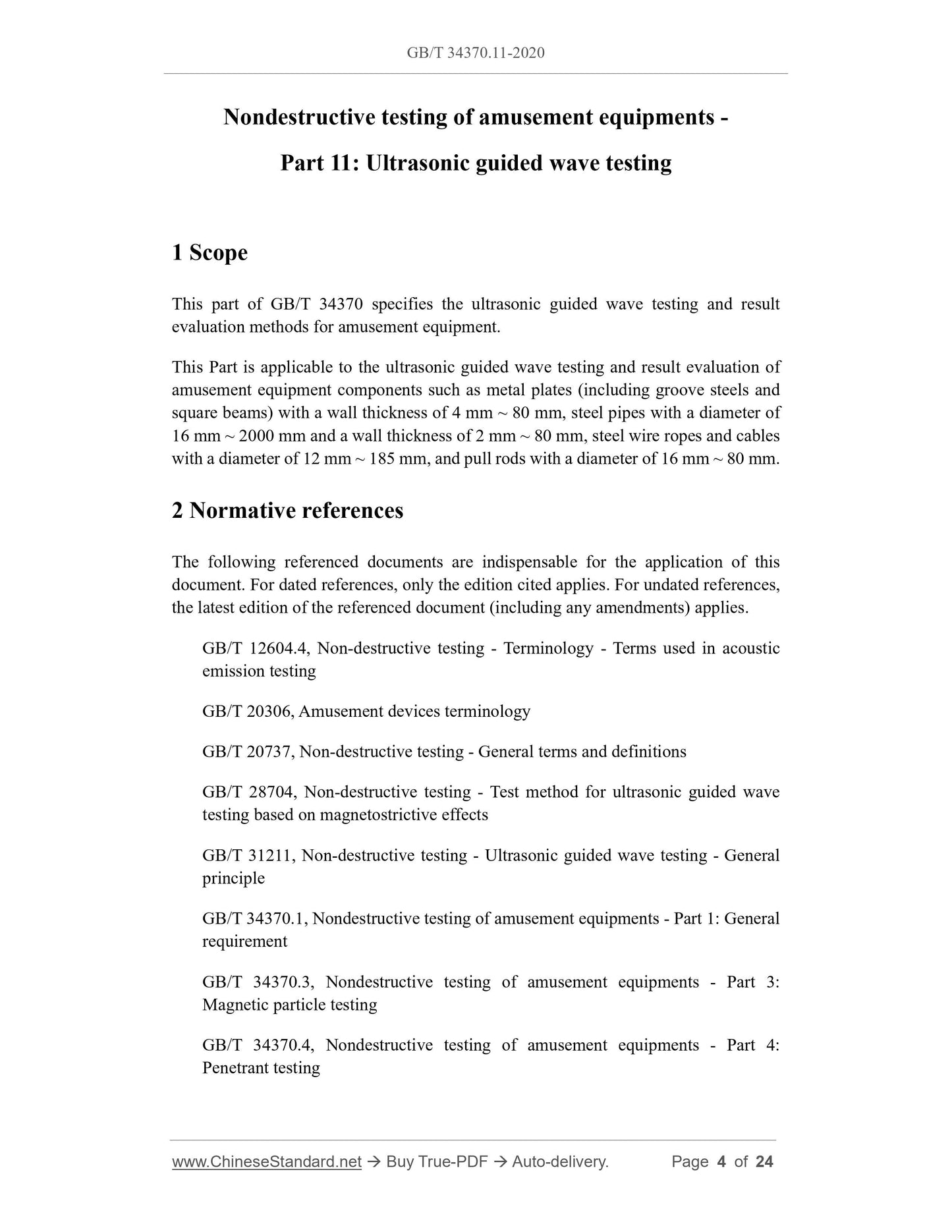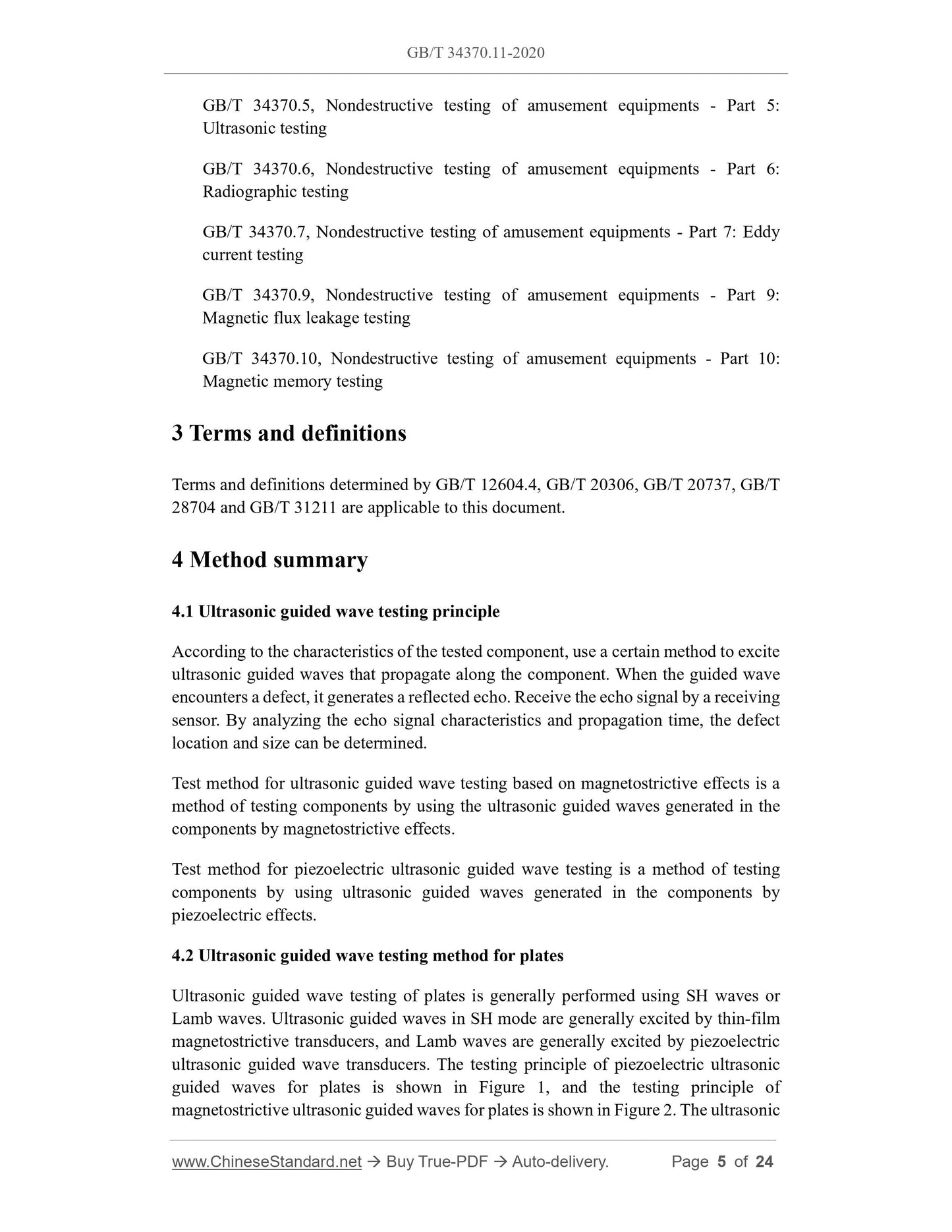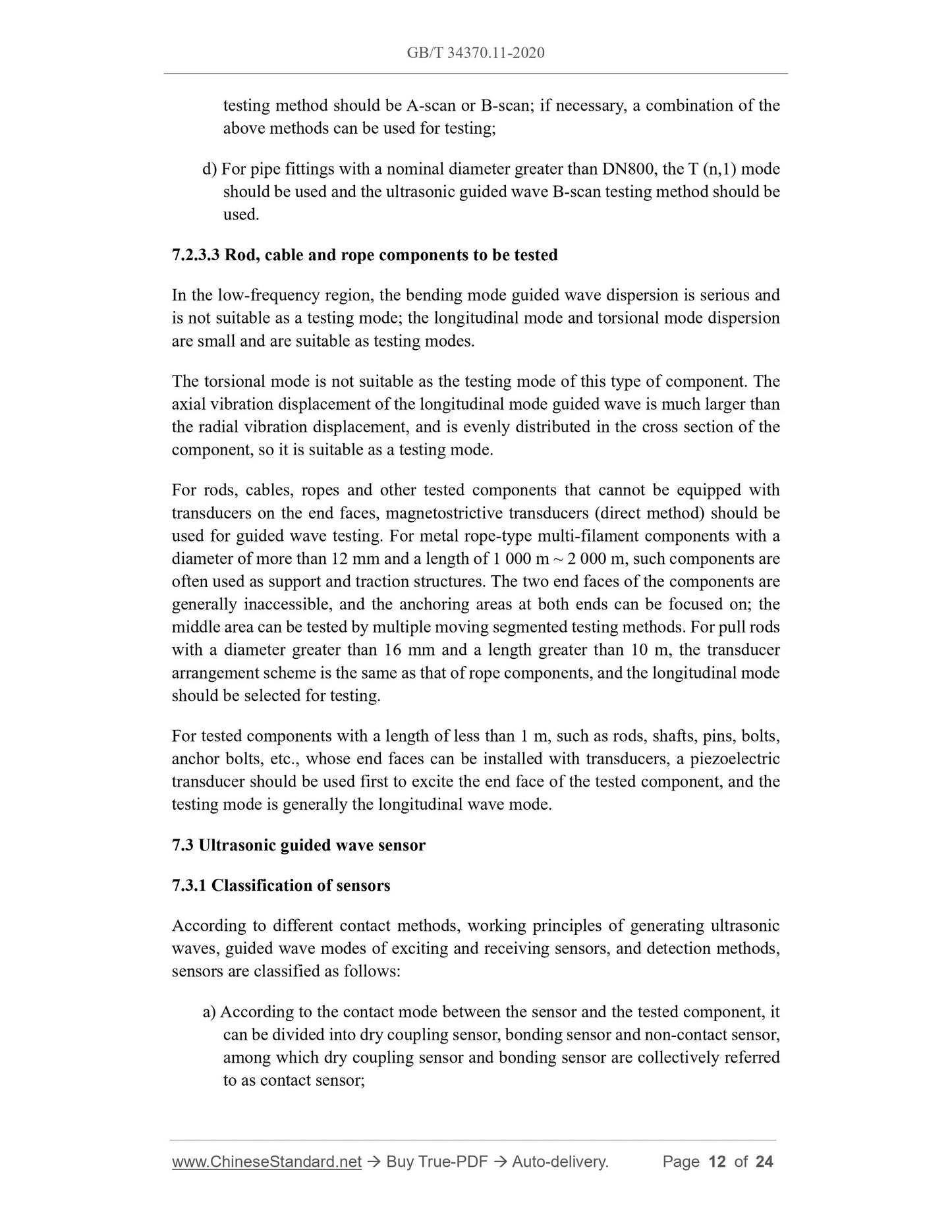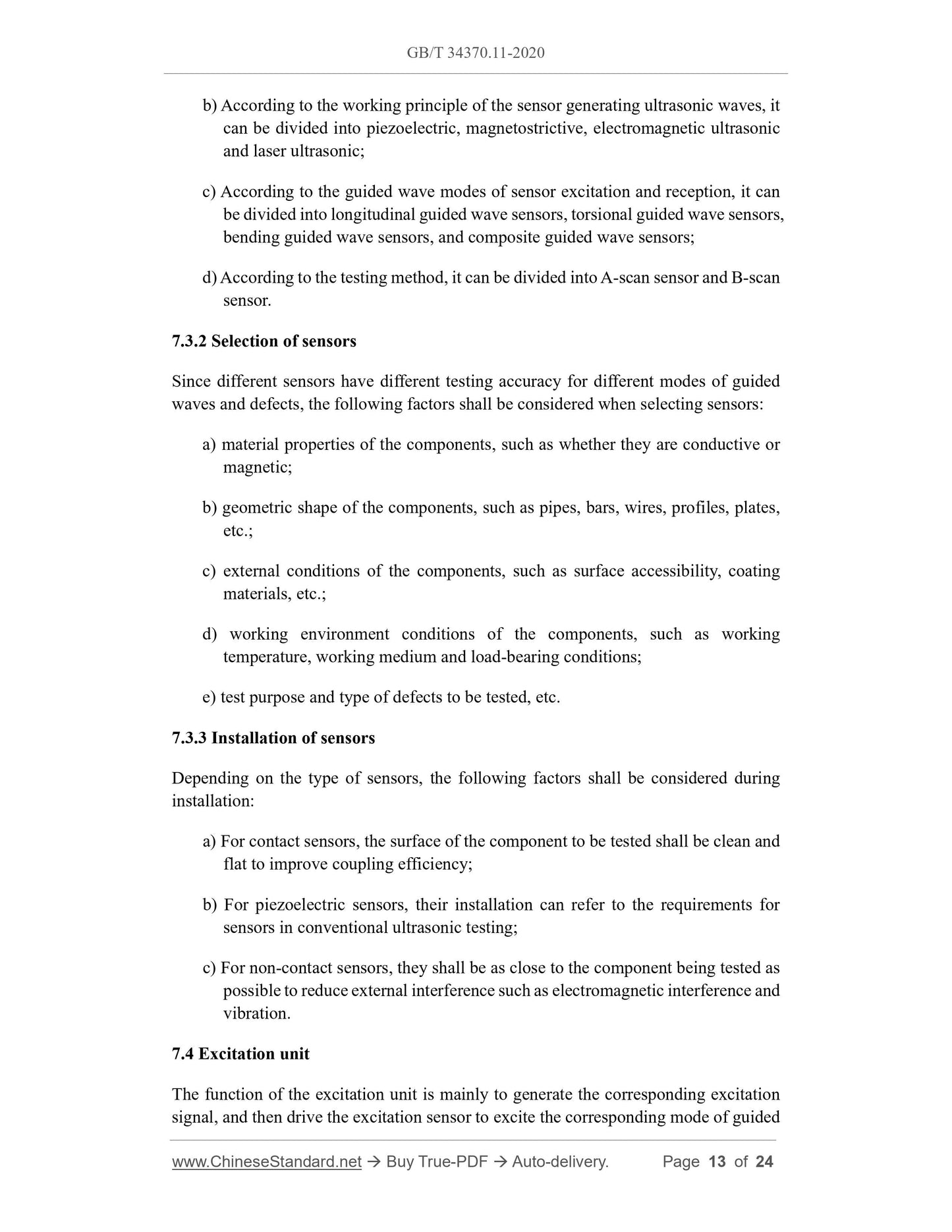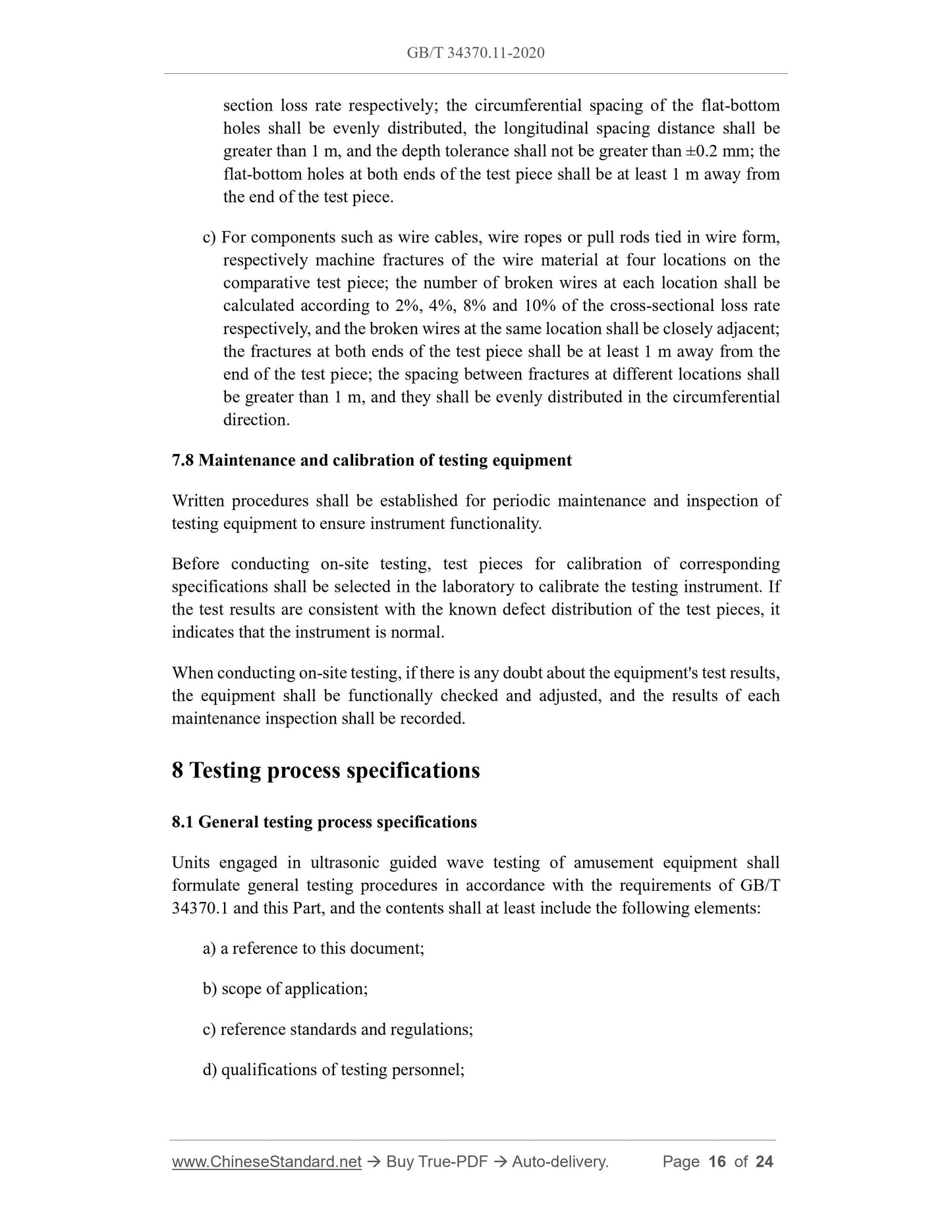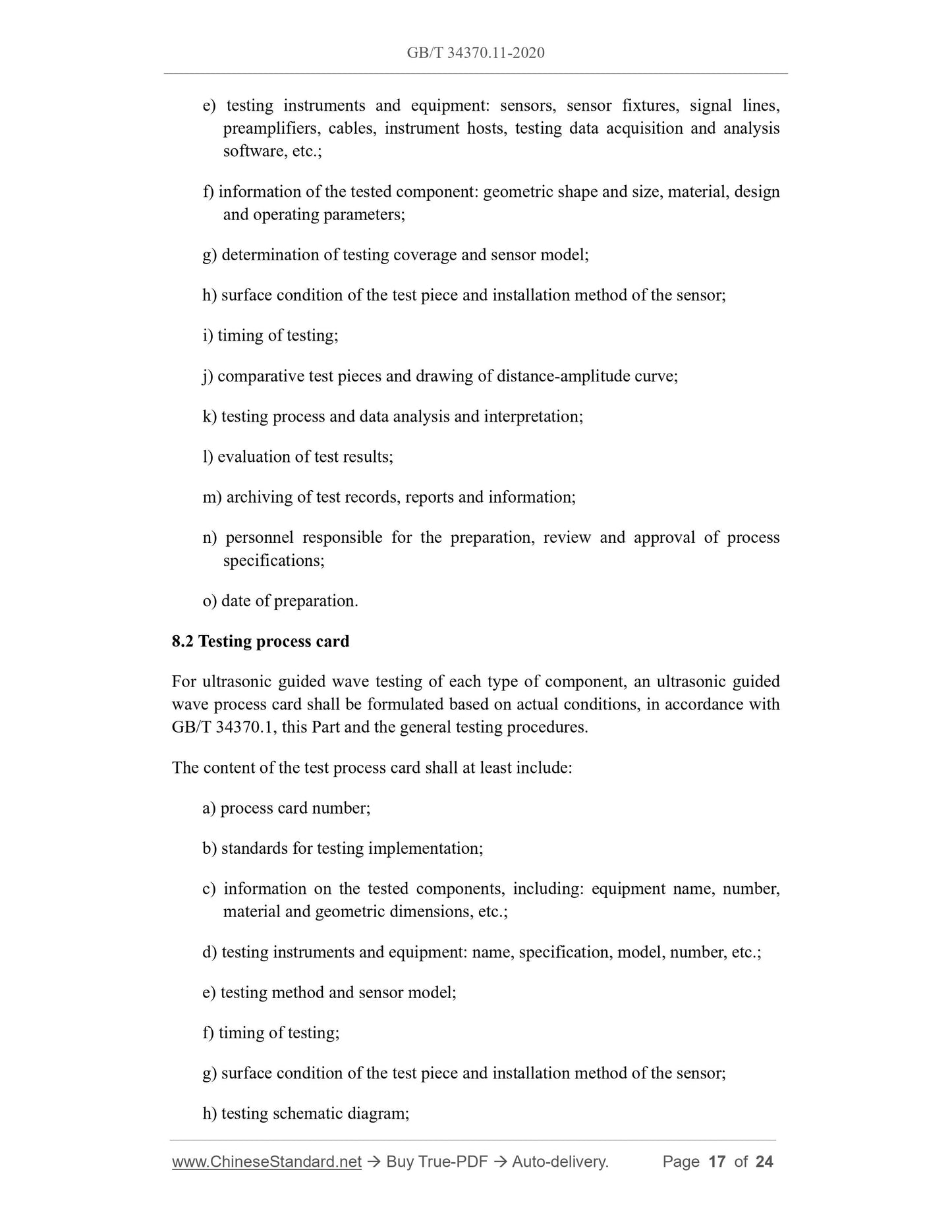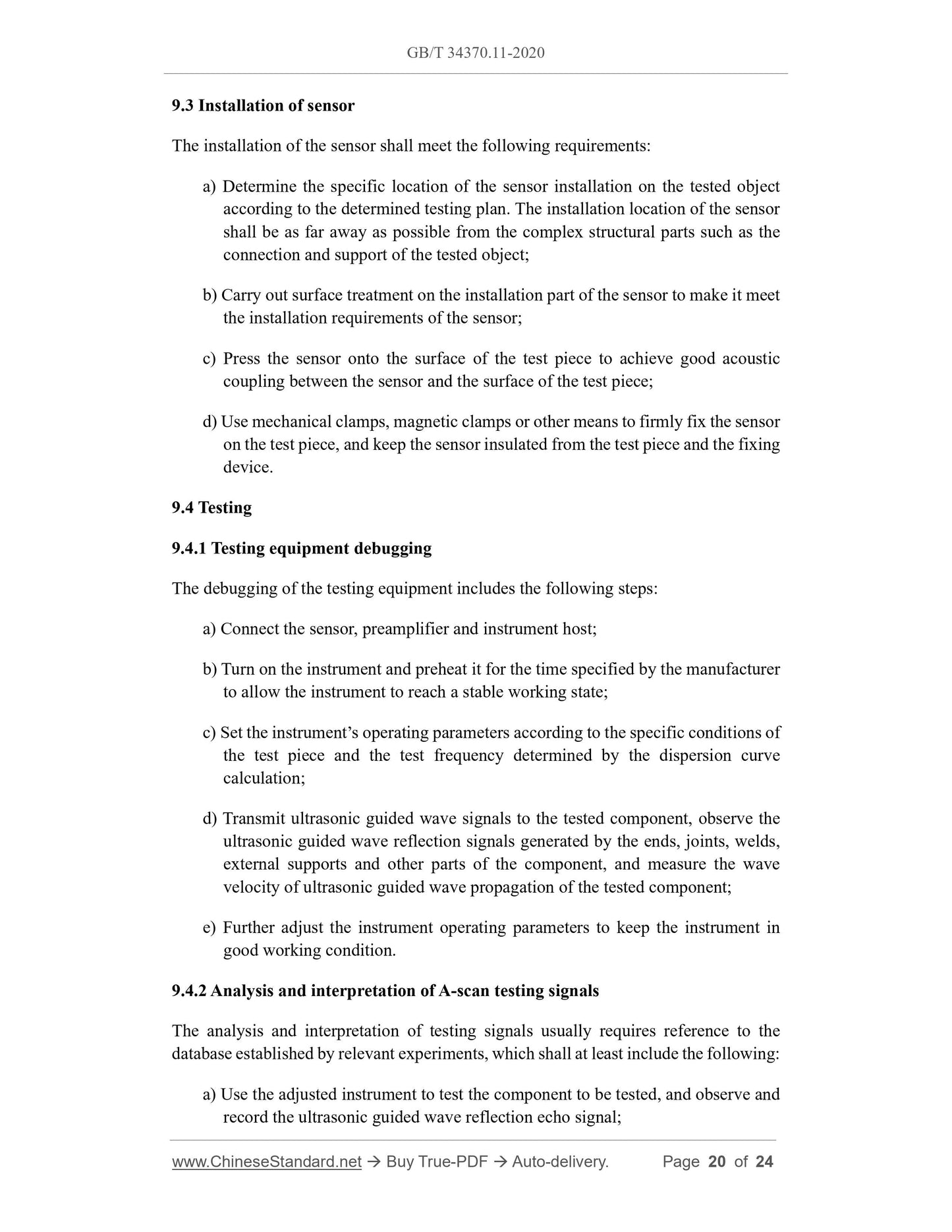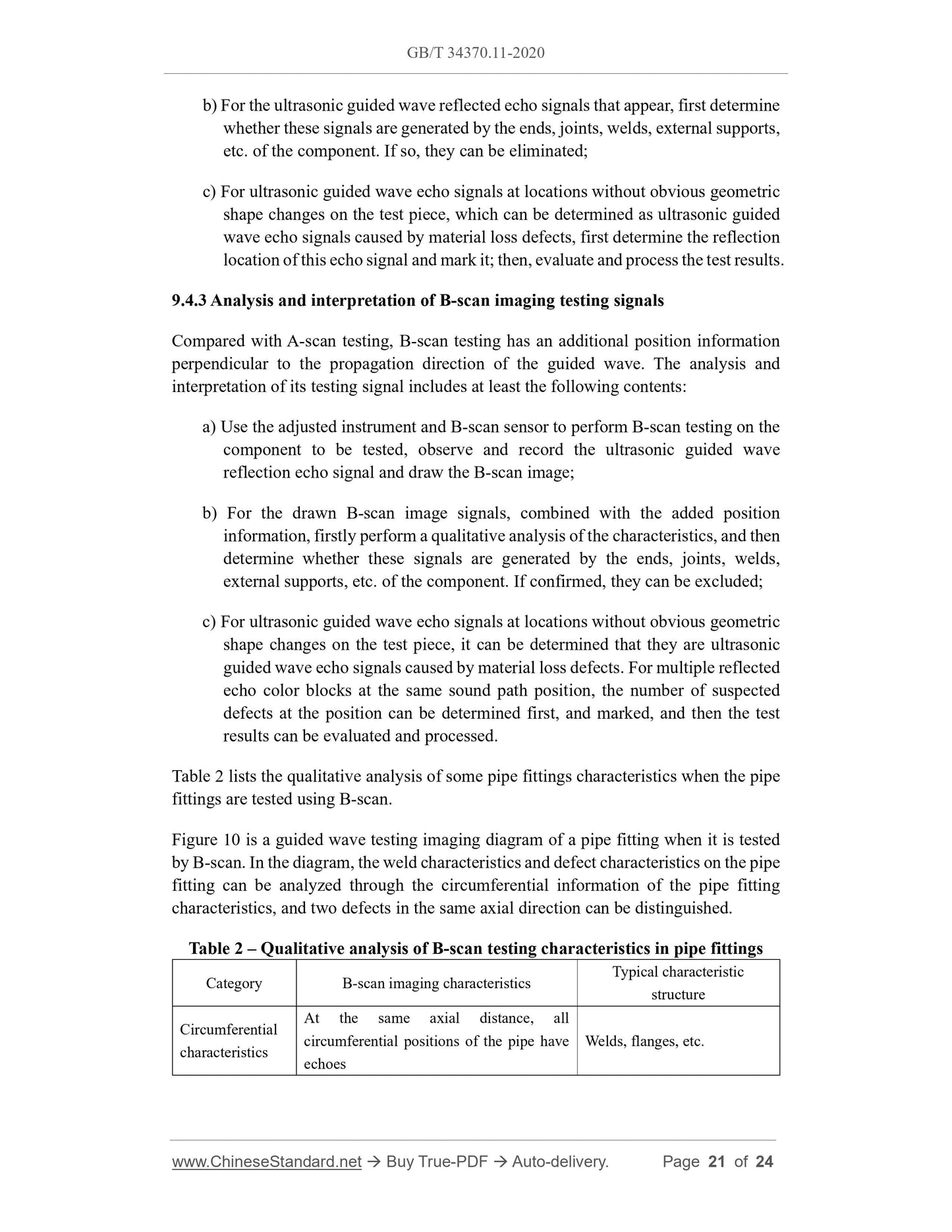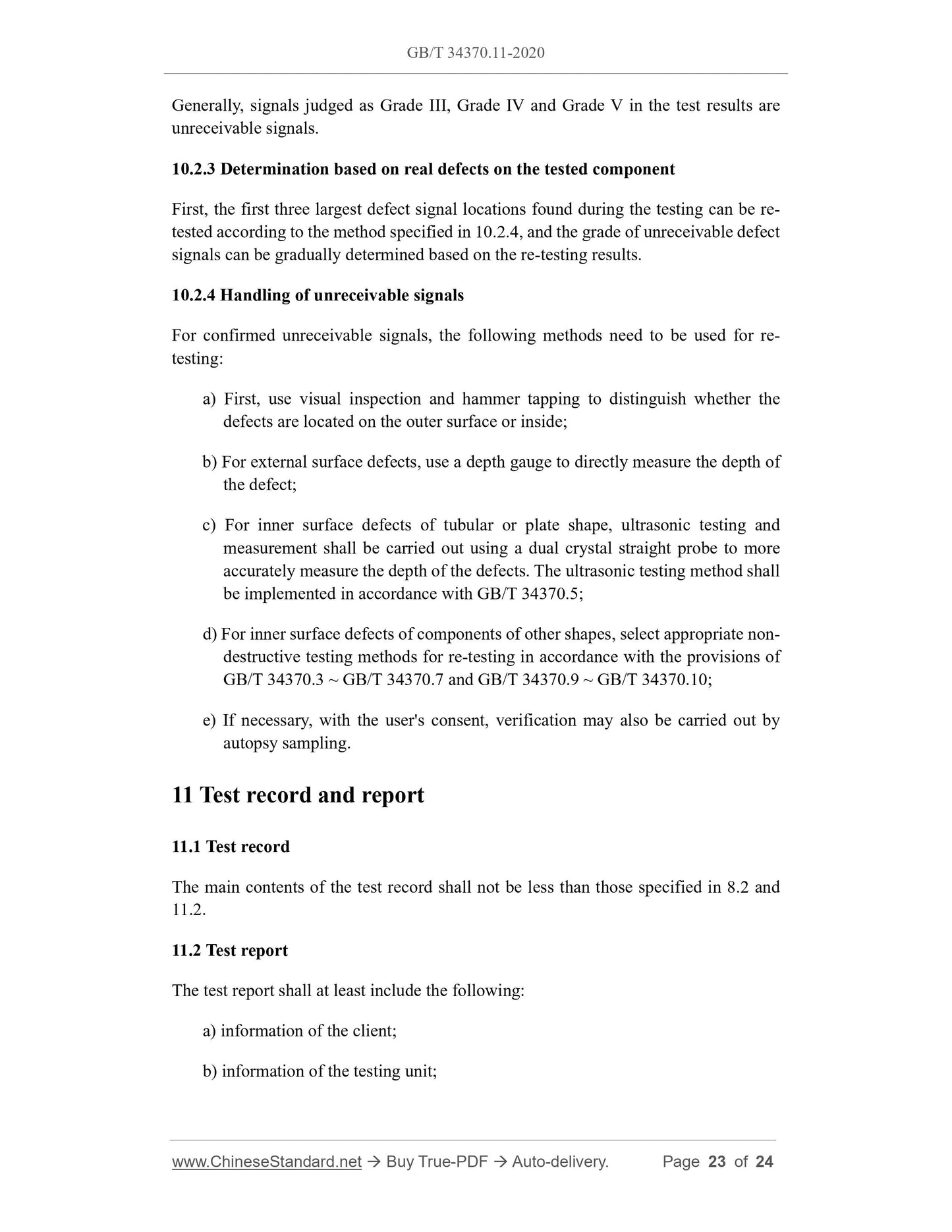1
/
of
11
www.ChineseStandard.us -- Field Test Asia Pte. Ltd.
GB/T 34370.11-2020 English PDF (GB/T34370.11-2020)
GB/T 34370.11-2020 English PDF (GB/T34370.11-2020)
Regular price
$260.00
Regular price
Sale price
$260.00
Unit price
/
per
Shipping calculated at checkout.
Couldn't load pickup availability
GB/T 34370.11-2020: Nondestructive testing of amusement equipment - Part 11: Ultrasonic guided wave testing
Delivery: 9 seconds. Download (and Email) true-PDF + Invoice.Get Quotation: Click GB/T 34370.11-2020 (Self-service in 1-minute)
Newer / historical versions: GB/T 34370.11-2020
Preview True-PDF
Scope
This part of GB/T 34370 specifies the ultrasonic guided wave testing and resultevaluation methods for amusement equipment.
This Part is applicable to the ultrasonic guided wave testing and result evaluation of
amusement equipment components such as metal plates (including groove steels and
square beams) with a wall thickness of 4 mm ~ 80 mm, steel pipes with a diameter of
16 mm ~ 2000 mm and a wall thickness of 2 mm ~ 80 mm, steel wire ropes and cables
with a diameter of 12 mm ~ 185 mm, and pull rods with a diameter of 16 mm ~ 80 mm.
Basic Data
| Standard ID | GB/T 34370.11-2020 (GB/T34370.11-2020) |
| Description (Translated English) | Nondestructive testing of amusement equipment - Part 11: Ultrasonic guided wave testing |
| Sector / Industry | National Standard (Recommended) |
| Classification of Chinese Standard | Y57 |
| Classification of International Standard | 97.200.40 |
| Word Count Estimation | 18,149 |
| Date of Issue | 2020-11-19 |
| Date of Implementation | 2021-06-01 |
| Regulation (derived from) | National Standard Announcement No. 26 of 2020 |
| Issuing agency(ies) | State Administration for Market Regulation, China National Standardization Administration |
Share
